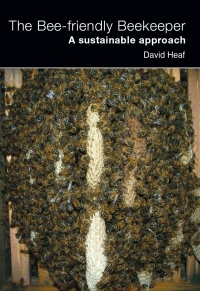

Preface
Prologue
A bid for freedom?
Controlled swarming
Balancing interests
Introduction
1. Keeping bees sustainably – fundamentals
2. Fundamental attitudes of beekeepers – ethics in beekeeping
Agricultural and environmental ethics applied to beekeeping
The dominator
The steward
The partner
The participant
The ethical matrix
3. Shelter
Thermal and hygrological issues – 1. Comb support
Thermal and hygrological issues – 2. Covering the nest
Roof
Quilt
Nest cover
Cold climates
Thermal and hygrological issues – 3. the hive body
Shape
Materials
Wall thickness
Box internal footprint
Depth
Insulation
Thermal and hygrological issues – 4. The floor and entrance
4. Comb
Drone cells
Worker cells
Comb spacing
Orientation of comb
Comb age
Role of natural comb in colony communication
5. Seclusion
Non-intervention surveillance
Inspecting for disease
Unintended disturbances
African bees and absconding
6. Sustenance
Forage
Colony density in the landscape
Feeding
7. Diseases and pests
Varroa
Micro-organisms
Pesticides
8. Breeding
Artificial queen breeding
In situ breeding with the whole colony
Artificial swarming
Natural swarming
9. The People's Hive of Abbé Émile Warré
Precursors
Construction
Management
Apiary site
Use of smoke
Hiving bees
Feeding
Monitoring progress
Harvesting honey
Extracting honey
Rendering wax
Swarming
Varroa control
Wintering
Later years
10. Warré hive modifications and modern management tips
Floor and entrance
Boxes
Top-bars and spales
Frames
The People's Hive with frames
Roger Delon's frame
Gilles Denis' semi-frame
Top-bar cloth, quilt and roof
Stand
Removing combs on top-bars
Intensely melliferous localities
Appendix 1 Thermal conductivities of hive materials
Appendix 2 Plans for constructing a Warré hive – The People's Hive
Appendix 3 Plans for constructing a Warré hive lift
Appendix 4 A selection of Internet resources
Acknowledgements
Glossary
References
Endnotes
Index
Preface
This book arose from a series of articles in The Beekeepers Quarterly in 2007/8 and resulting suggestions from several people that I republish that material in book form. With the scope that this format has offered, I have revised and greatly extended what appeared in the articles, including, where appropriate, the latest scientific evidence behind some of the views expressed.
Like the articles, this book is intended primarily for beekeepers and would-be beekeepers. A basic knowledge of the life cycle of the honey bee is assumed, as well as some familiarity with elementary beekeeping. This allows me to avoid filling the book with information which is readily available and often thoroughly covered in beekeeping and bee biology publications elsewhere, including the Internet.
Least of all is this book intended to be a manual on beekeeping, although a couple of chapters are devoted to the basics of making and running a simple hive – Émile Warré's 'People's Hive' described in his book Beekeeping for All – as one practical example of a possible start on the road to sustainable beekeeping that the author has thoroughly tested.
If the reader requires some advice on where to look for background reading then, for bee biology and behaviour, I suggest Jürgen Tautz's The Buzz About Bees (2008). It is superbly illustrated and includes new findings about the natural history of honey bees that may surprise even a few adept beekeepers. Some of these findings are particularly helpful towards designing a bee-appropriate beekeeping.
For a good, recent basic book on beekeeping, which also includes a phenomenological presentation of bee colony development, I recommend Michael Weiler's Bees and Honey from Flower to Jar (2006). His book also briefly presents Demeter beekeeping according to biodynamic husbandry, which has a more than 80-year history and involves a way of keeping bees that better respects the nature of the bee.
I refer extensively to material that is available free on the Internet. Some sub-topics on the sustainable beekeeping methods presented here are covered in more illustrated detail on web pages and thus have the advantage that they can be added to relatively easily. The net also offers a number of fora and email e-groups which can be very helpful for novices looking for support when starting beekeeping; these help people to keep in touch with new discoveries in apiology as well as to exchange views on keeping bees in a really bee-friendly way.
Northern Bee Books (Publisher) sales page http://www.groovycart.co.uk/cart.php?c=533&p=41571